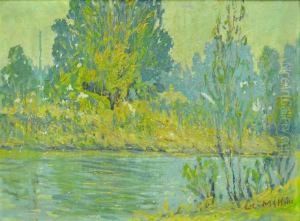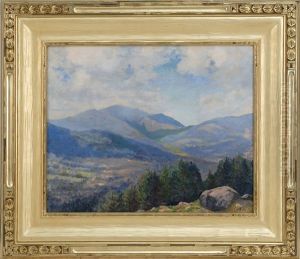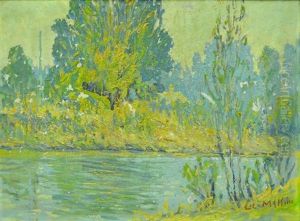Charles C. Mckim Paintings
Charles Follen McKim was a pivotal figure in American architecture, embodying the ideals of the American Renaissance and leaving a lasting legacy through his works and influence. Born on August 24, 1847, in Chester County, Pennsylvania, McKim was part of a generation that sought to elevate American architecture to the standards of European classical traditions, infusing it with a sense of national identity and cultural dignity. His education at Harvard College and the École des Beaux-Arts in Paris equipped him with the principles of classical architecture, which would become foundational to his professional ethos.
McKim, along with William Rutherford Mead and Stanford White, founded the architectural firm McKim, Mead & White in 1879, which quickly rose to prominence as one of the most successful and influential architectural practices in the United States. The firm was responsible for designing many iconic buildings and public spaces, effectively shaping the architectural landscape of America during the late 19th and early 20th centuries. Among their most notable projects were the Boston Public Library, which exemplified McKim's commitment to classical architecture and his belief in the edifying power of beautiful public spaces, and the renovation of the White House in 1903, which solidified his reputation as an architect of national significance.
McKim's dedication to classical ideals was not just limited to his architectural practice. He was also a key figure in the City Beautiful movement, advocating for the importance of aesthetic considerations in urban planning. This movement sought to introduce beautification and monumental grandeur in American cities, aiming to create harmonious and inspiring environments that would elevate the quality of urban life and reflect the democratic ideals of the country.
Throughout his career, McKim was honored with numerous awards and recognitions, including the Gold Medal of Honor from the American Institute of Architects in 1909, which was awarded to him shortly before his death on September 14, 1909. His legacy endures not only through the buildings he designed but also through his influence on generations of architects and planners who have followed in his footsteps, aspiring to the harmonious integration of beauty, functionality, and ethical responsibility in the built environment.









